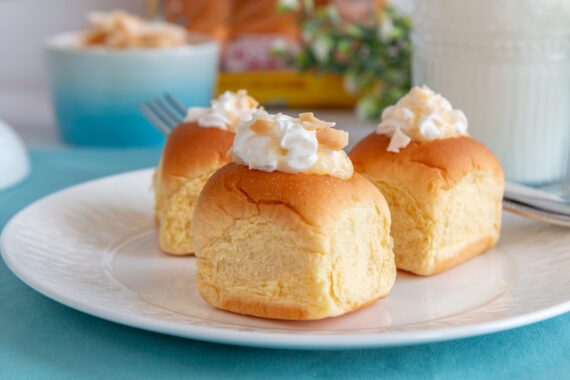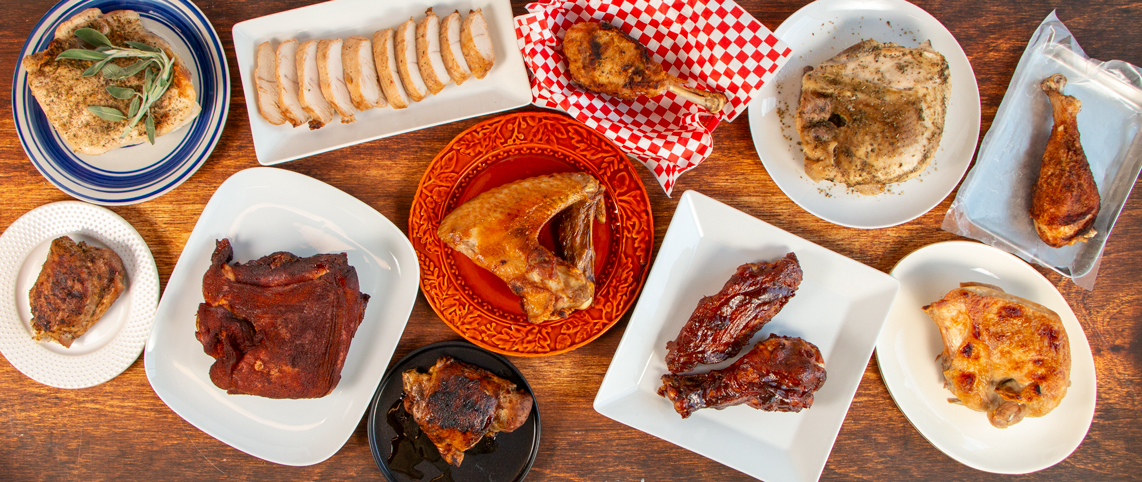
As Thanksgiving approaches, the majestic turkey once again takes center stage on our dining tables. But beyond the traditional oven-roasted bird, there lies a world of possibilities for cooking this festive centerpiece. Whether you’re hosting a large gathering or planning a small, intimate dinner, the way you cook your turkey can add a unique twist to your holiday feast. From the smoky flavors of BBQ to the crispiness of a deep-fried turkey, this guide will walk you through every method to help you find your perfect Thanksgiving turkey recipe.
Tip: If you’re planning on hosting a Thanksgiving gathering this year, check out our Beginner’s Guide to Thanksgiving which includes everything from a printable checklist to a party planning timeline, table setting ideas, and a complete recipes guide.
Turkey Parts Infographic
Curious about where each part of the turkey is and how they connect? Check out the below infographic!
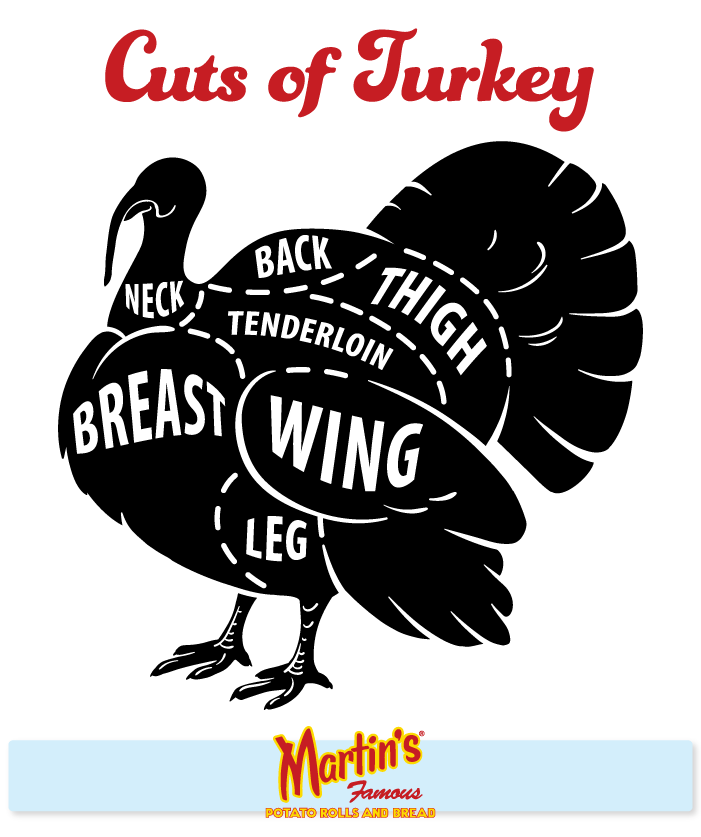
If you are looking to segment your turkey prior to cooking, check out this helpful step-by-step guide. Sectioning the turkey can be a great way to ensure faster cooking, or allow you to utilize different cooking methods for various parts of the turkey!
All the Ways to Cook a Turkey
Let’s learn how to cook a turkey! The following sections will touch on the basics of each cooking method as well as which part(s) of the turkey it is typically used for, cooking times and temperatures, and additional tips and recipe ideas. Click the links below to skip to the various sections:
- Oven-Roasting
- Grilling
- Smoking/Barbecuing
- Deep-Frying
- Air-Frying
- Pan-Frying
- Slow-Cooking
- Pressure-Cooking
- Boiling
- Braising
- Griddling
- Baking
Oven-Roasting
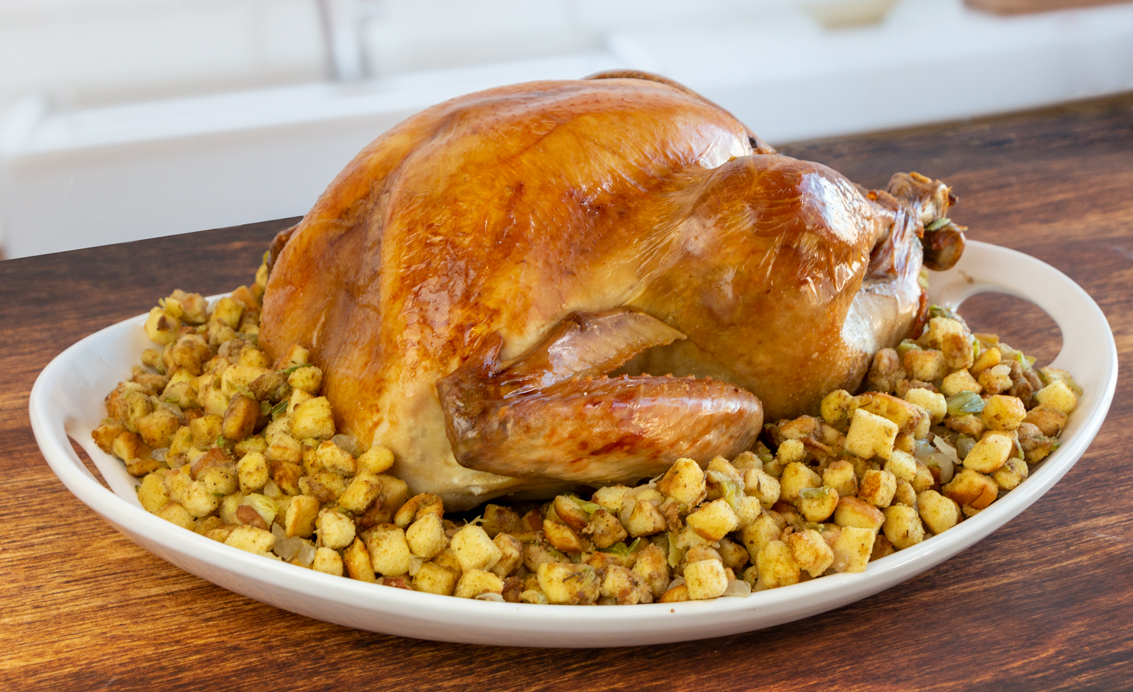
Oven-roasting is the quintessential, traditional method for preparing a Thanksgiving turkey. It involves cooking the turkey in an oven at a consistent temperature, allowing the bird to cook evenly, resulting in a crispy skin and a moist, tender interior. This method is perfect for those who appreciate the classic Thanksgiving flavor and aroma. It allows for a variety of seasonings and stuffings, making it a versatile choice for any feast.
Parts Suitable:
Whole turkey, turkey breast.
Cooking Temperature:
325°F to 350°F (163°C to 177°C).
Cooking Time:
Varies based on size; approximately 15 minutes per pound (unstuffed) at 325°F or 13 minutes per pound (unstuffed) at 350°F.
Overview:
Season the turkey or turkey breast as desired, and roast in a preheated oven. For a whole turkey, basting is recommended for added moisture. For a turkey breast, consider covering with foil to prevent excessive browning.
Tips:
- Use a meat thermometer to ensure the turkey reaches an internal temperature of 165°F. This means checking the thickest parts of the breast, the innermost part of the thigh, and the innermost part of the wing.
- For turkey breasts, a roasting rack can help circulate heat evenly.
- Stuffing the turkey will increase the cook time. It is generally recommended to cook the stuffing separately from the turkey.
Recipe: Roasted Turkey with Filling and Gravy
Watch the above video or follow the step by step recipe at the link below to learn how to cook a classic oven-roasted turkey paired with homemade gravy and Mrs. Martin’s Famous Potatobred Stuffing.
https://potatorolls.com/recipes/roasted-turkey-with-filling-and-gravy
Grilling
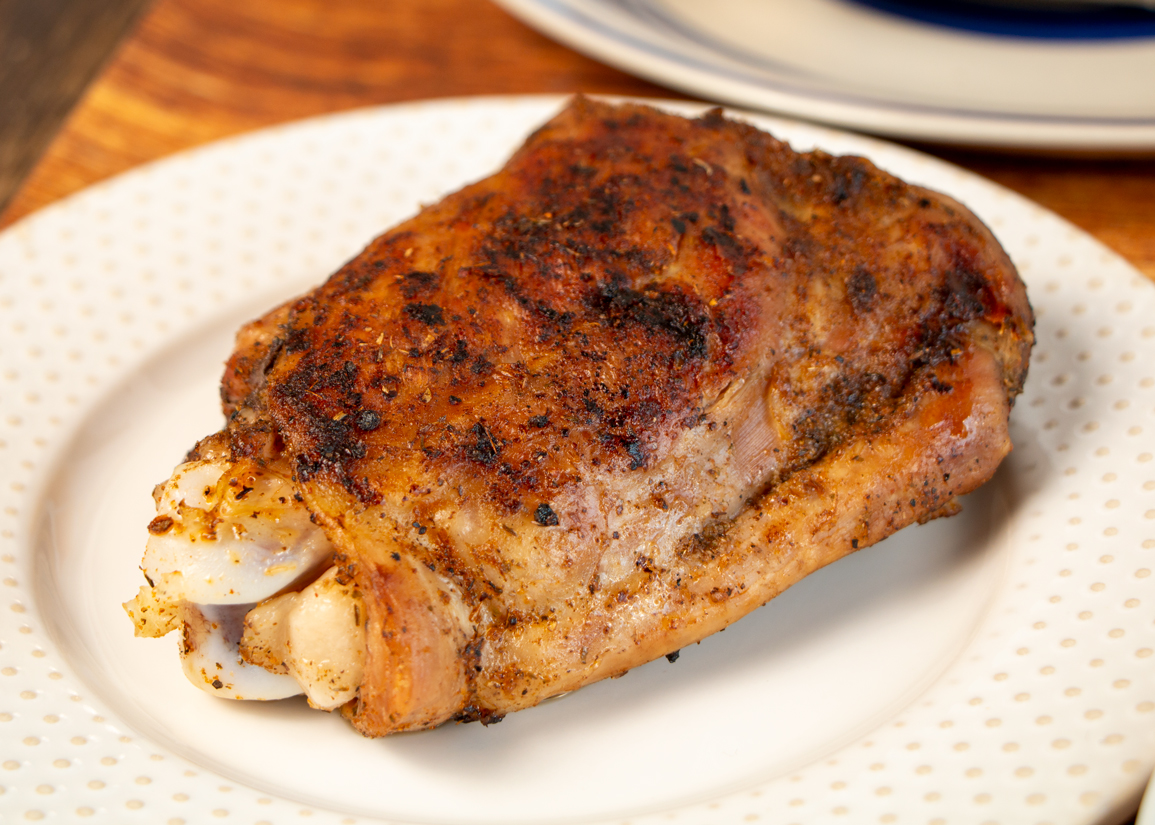
Grilled Turkey Thigh
Grilling a turkey offers a delightful twist to the traditional Thanksgiving meal. This method is ideal for adding a subtle, smoky flavor to the meat, especially when using charcoal or wood chips. Grilling is best suited for smaller gatherings, as it typically accommodates smaller birds or turkey parts. It’s a great way to keep the kitchen free for other dishes while enjoying the crisp autumn air.
Parts Suitable:
Whole turkey, turkey breasts, thighs, legs, or wings.
Cooking Temperature:
Medium heat, around 350°F to 375°F (177°C to 190°C) for indirect grilling.
Cooking Time:
Depends on the size and part; a whole turkey may take 2-3 hours.
Overview:
Preheat the grill, prepare the turkey with seasonings, and cook over indirect heat.
Tips:
- Direct grilling may be done over high heat for a short period for searing, if desired.
- Keep the grill lid closed to maintain a consistent temperature. Add more charcoal (if applicable), as necessary.
- Baste the turkey in your choice of marinade every 30-60 minutes to add additional flavor and moisture.
Recipe: Grilled Thanksgiving Turkey
The below recipe from Taste of Home includes helpful instructions for this cooking method, along with other tips and resources such as a cook time calculator based on the weight of the turkey.
https://www.tasteofhome.com/article/how-to-grill-a-turkey/
Smoking/Barbecuing
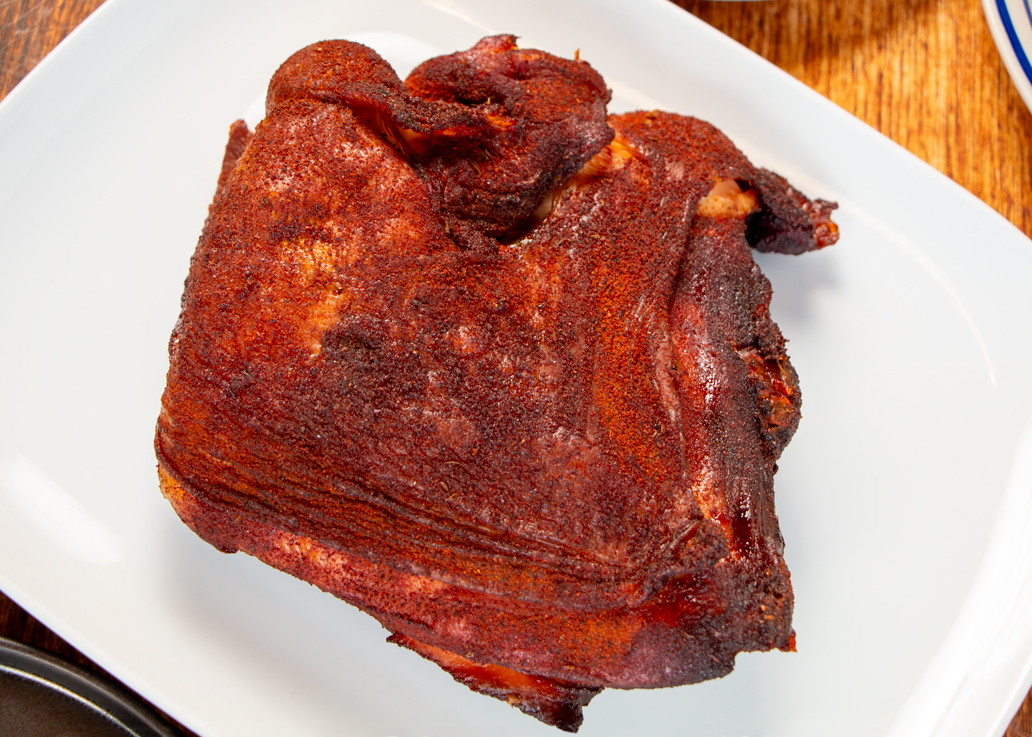
Smoked Turkey Breast
Smoking or barbecuing a turkey is for those who love a deep, rich smoky flavor. This low-and-slow cooking method imparts a unique taste that can’t be replicated in an oven. It requires patience and a bit of skill, as maintaining a consistent temperature is key. The result is a succulent, flavorful bird with a mouthwatering aroma that will make your Thanksgiving meal unforgettable.
Parts Suitable:
Whole turkey, breasts, or legs.
Cooking Temperature:
225°F to 250°F (107°C to 121°C).
Cooking Time:
About 25-30 minutes per pound; a whole turkey may require 6+ hours.
Overview:
Use a smoker or a grill set for indirect cooking, maintaining a steady temperature.
Tips:
- Low and slow cooking is essential for smoking to infuse the turkey with smoky flavor and ensure tenderness.
- Add flavored wood chips for extra smokiness.
- A good rule of thumb for this method is to choose a turkey that is between 10-15 pounds, to allow for a faster cook and better food safety.
- For larger birds, you can try spatchcocking the turkey to speed up the cooking time.
- If feeding a large crowd, try the spatchcock method, or consider cooking 2-3 smaller turkeys, as opposed to cooking one large bird the traditional way.
Recipe: Smoked Turkey
Follow the below recipe by Hey Grill Hey to learn how to cook a smoked turkey using a low-and-slow method of barbecuing. She also includes additional information like a portion planning guide and a list of recommended supplies.
https://heygrillhey.com/smoked-turkey
Deep-Frying
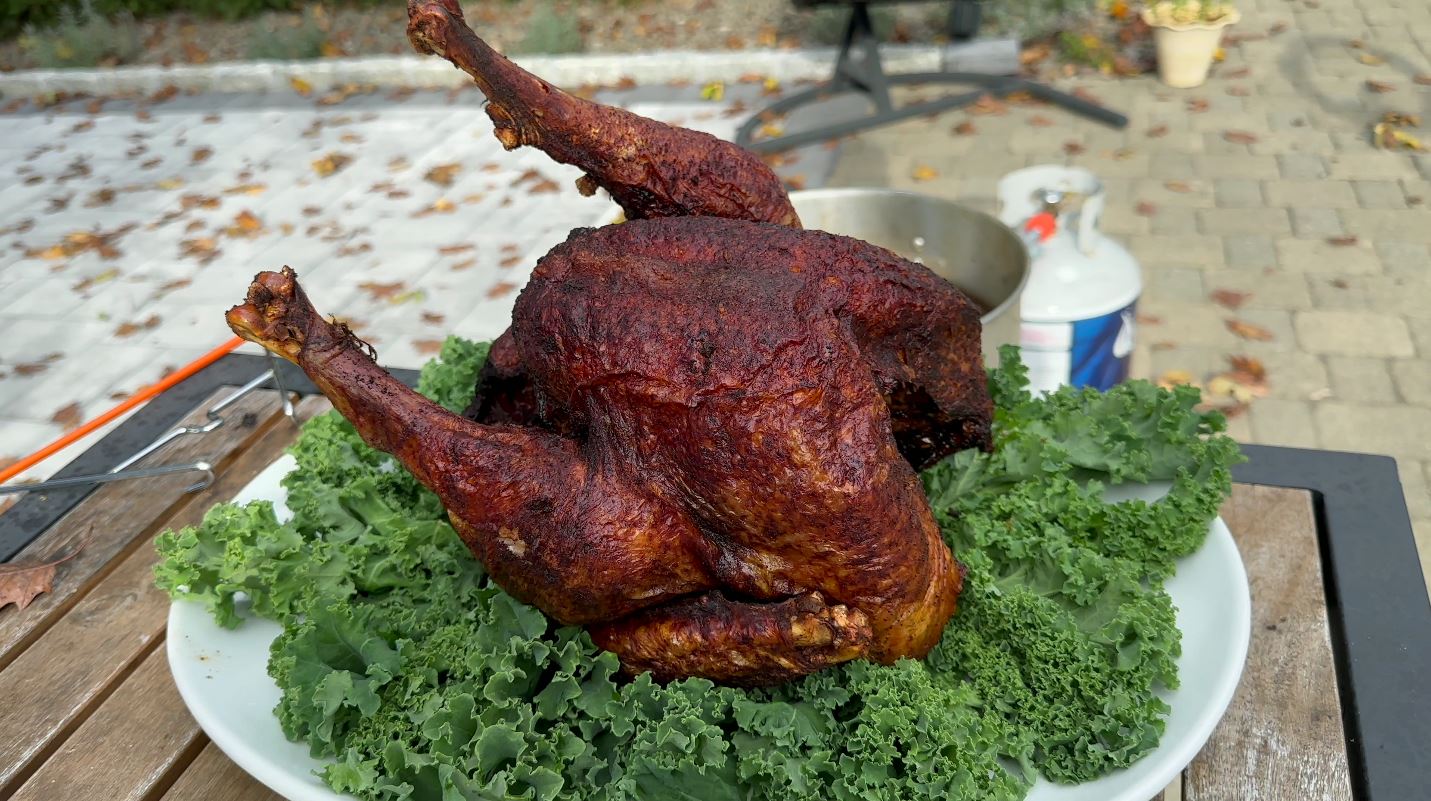
Deep-Fried Turkey
Deep-frying a turkey is a Southern tradition that has gained popularity for its ability to produce a moist interior and a perfectly crispy exterior in a fraction of the time it takes to oven-roast. It’s an intense cooking method that requires special equipment and safety precautions, but the result is a deliciously rich and flavorful turkey. This method is ideal for those looking to add an adventurous twist to their holiday feast.
Parts Suitable:
Whole turkey, preferably smaller in size.
Oil Temperature:
350°F to 375°F (177°C to 190°C).
Cooking Time:
Approximately 3-4 minutes per pound.
Overview:
Heat oil in a large fryer, and carefully lower the seasoned turkey into the hot oil.
Tips:
- Maintaining a consistent oil temperature is crucial for safety and to achieve a crispy exterior without overcooking the interior.
- Ensure the turkey is completely thawed and dry to prevent oil splatter.
- Be sure to turn off the gas/flame when adding and removing the turkey to prevent flare-ups.
- Use precaution when raising and lowering the turkey into and out of the hot oil. Wear protective gear such as rubber gloves and a long apron.
Recipe: Deep Fried Turkey
Watch this video tutorial from @BigPaulOnTheGrill to get step-by-step instructions for deep-frying your Thanksgiving turkey, plus a bonus recipe for a Deep-Fried Turkey Sandwich on Martin’s Potato Rolls!
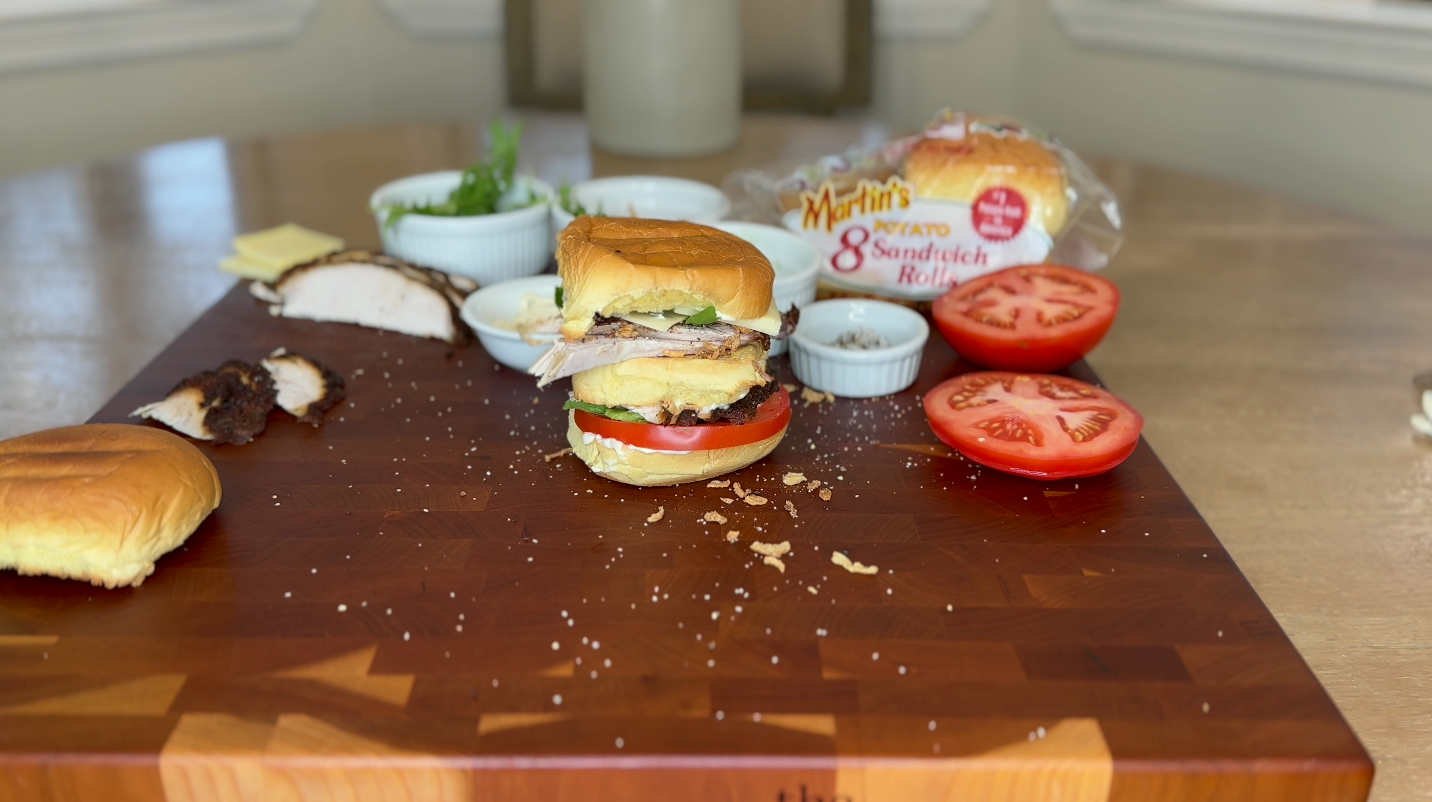
Deep-Fried Turkey Sandwich on Martin’s Potato Rolls
Additional Recipe: Fried Turkey Breast Sandwich
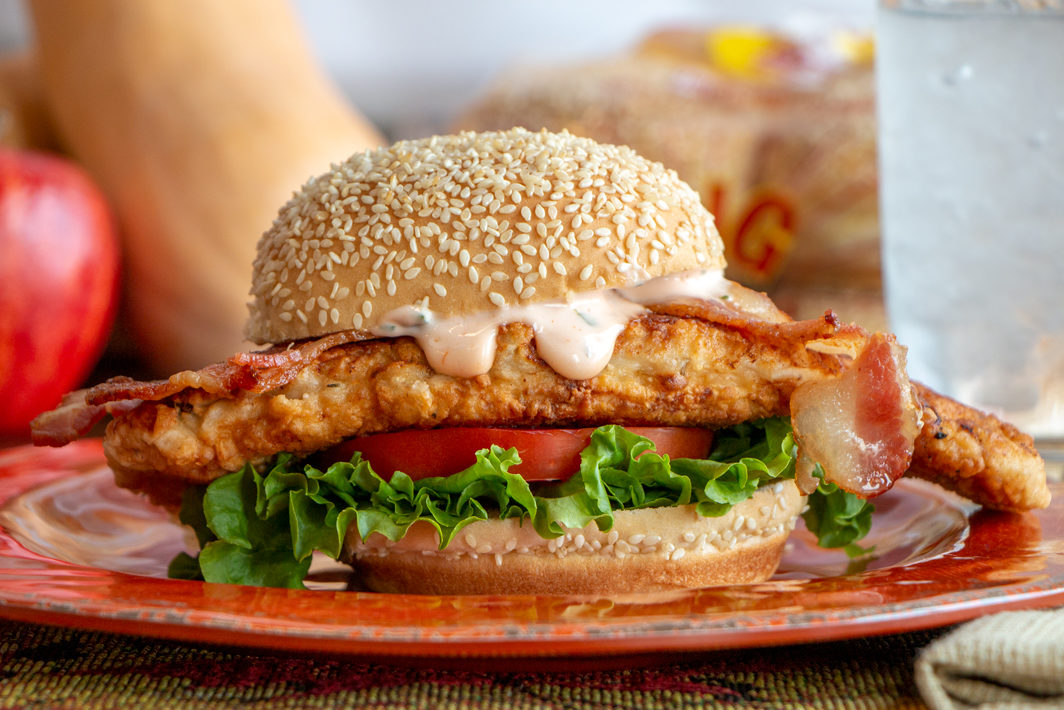
If you’re interested in trying a deep-frying method but don’t want to use a whole turkey, try the below recipe which uses just the turkey breast, for a crispy and delicious sandwich on a Martin’s Big Marty’s Roll!
https://potatorolls.com/recipes/fried-turkey-sandwich/
Air-Frying
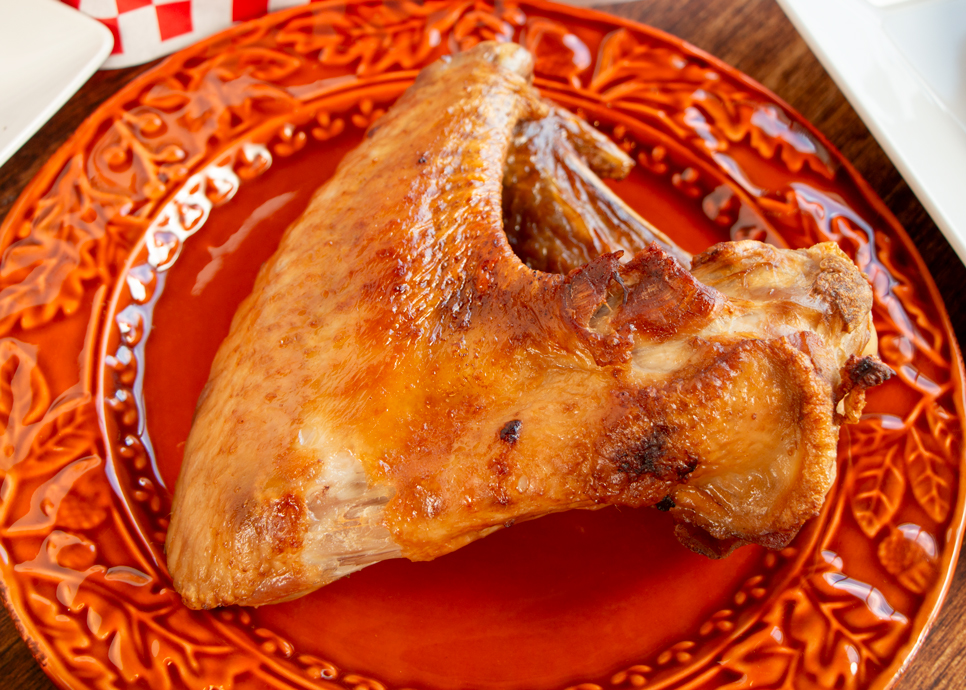
Air-Fried Turkey Wing
Air-frying is a modern, healthier alternative to traditional frying methods. It’s perfect for cooking smaller turkey cuts like breasts or thighs. This method uses hot air circulation to cook the turkey, resulting in a crispy outer layer while keeping the inside juicy and tender. It’s a quick, convenient option, especially for smaller gatherings or for those who want to avoid the fuss of large-scale cooking.
Parts Suitable:
Turkey breasts, thighs, cutlets, or wings.
Cooking Temperature:
Around 350°F (177°C).
Cooking Time:
Varies depending on the size of the cut, upwards of 45-60 minutes.
Overview:
Season the turkey parts and place them in the air fryer basket. Cook at the recommended temperature until the turkey is golden brown and cooked through.
Tips:
- Times and temperatures can vary based on the air fryer model and the size of the turkey or turkey parts.
- Avoid overcrowding the air fryer basket to ensure even cooking.
Recipe: Air Fryer Turkey Breast
Try the below recipe from SkinnyTaste, to practice making a 4-5 lb. bone-in turkey breast using a 5-qt. or larger air fryer.
https://www.skinnytaste.com/air-fryer-turkey-breast
Pan-Frying
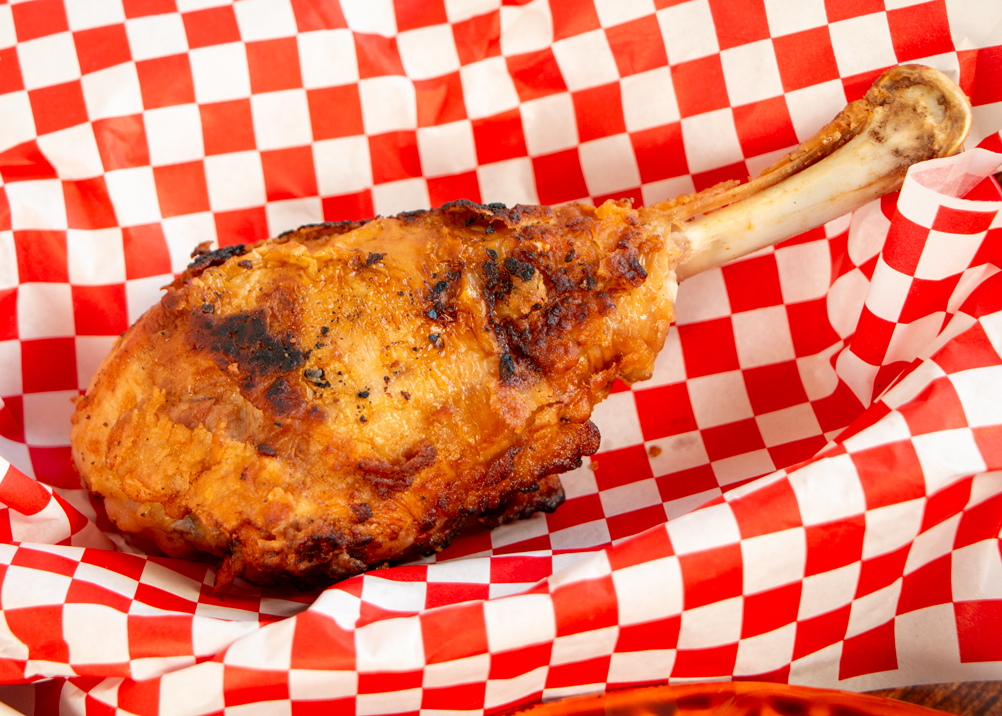
Pan-Fried Turkey Leg
Pan-frying is ideal for cooking individual turkey cuts, such as breasts, thighs, or cutlets. This method allows for a golden, crispy exterior while maintaining a juicy interior. It’s a quick and easy way to prepare a turkey meal, especially when time or oven space is limited. Pan-frying also offers the opportunity to create delicious pan sauces from the drippings.
Parts Suitable:
Turkey breasts, thighs, cutlets, or other parts as desired.
Cooking Temperature:
Medium to medium-high heat.
Cooking Time:
Generally 10-15 minutes, depending on the thickness of the cut.
Overview:
Heat oil or butter in a pan, and cook the seasoned turkey cuts until they are golden brown on both sides and cooked through.
Tips:
- Adjust the heat as needed to ensure the turkey is cooked through without burning the exterior.
- Let the turkey rest for a few minutes after cooking to retain its juices.
Recipe: Turkey Cutlets with Pan Gravy
Check out this recipe from Taste of Home, which uses turkey breast tenderloins, poultry seasoning, canola oil, butter, flour, and broth to make delicious turkey cutlets with a simple pan gravy.
https://www.tasteofhome.com/recipes/turkey-cutlets-with-pan-gravy/
Slow-Cooking
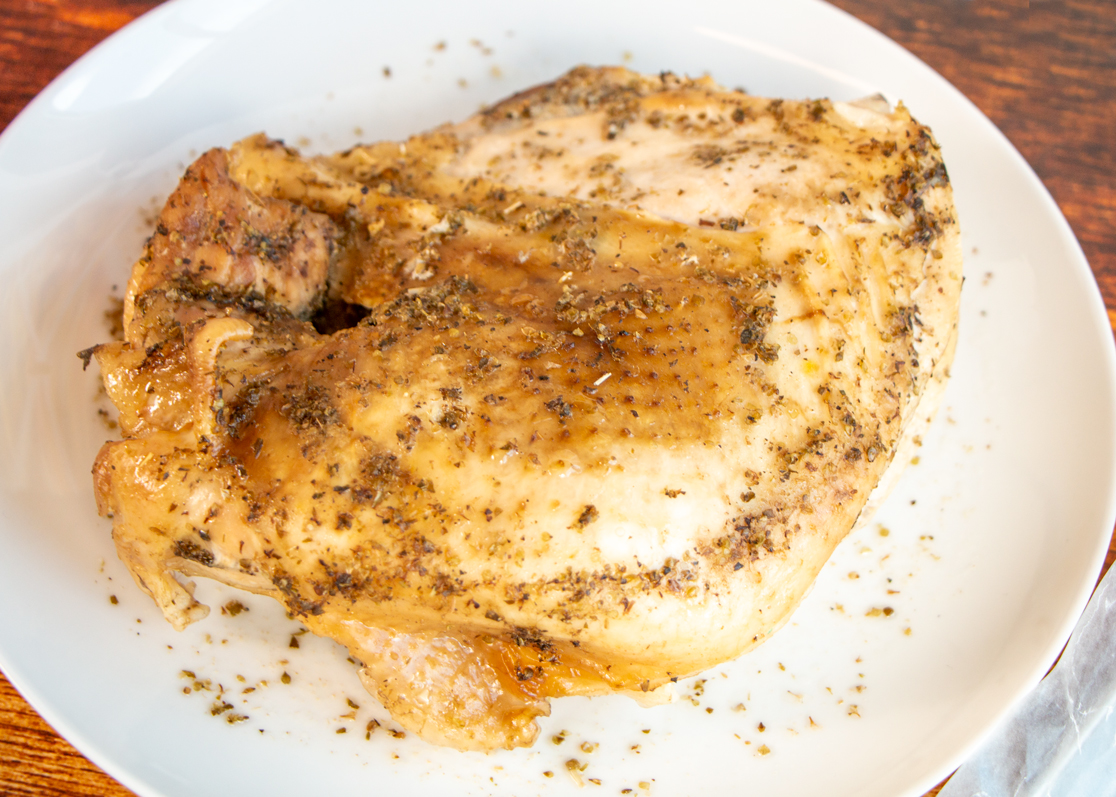
Slow-Cooked Turkey Breast
Using a slow-cooker for your turkey is a fuss-free method that guarantees a moist, tender result. It’s perfect for busy cooks or those who prefer to set it and forget it. While you won’t get a crispy skin, the slow-cooker is excellent for pulled turkey dishes or for cooking turkey in a sauce or gravy. It’s also a great space-saver, freeing up your oven for other holiday dishes.
Parts Suitable:
Whole turkey (if it fits), turkey breasts, thighs.
Temperature:
Low setting (typically around 200°F or 93°C) or High setting (around 300°F or 149°C).
Cooking Time:
6-8 hours on low heat; 4-6 hours on high heat.
Overview:
Place the turkey and desired seasonings or sauce in the slow-cooker. Cook on low until the turkey is tender and cooked through.
Tips:
- Ensure the turkey can fit comfortably in your slow cooker with the lid properly closed. This usually means a smaller turkey, often no larger than 8-10 pounds.
- Add vegetables like carrots, onions, and celery to the slow-cooker for added flavor.
- For crispy skin, transfer turkey from slow cooker to a roasting tray and broil on high (or roast at around 415°F) for 10-15 minutes or until skin is browned and crispy.
Recipe: Crispy Skin Slow Cooker Turkey with Homemade Gravy
Use the following recipe from CafeDelites to prepare an easy, flavorful slow cooker herbed turkey WITH crispy skin (thanks to the broiler)!
https://cafedelites.com/crispy-skin-slow-cooker-turkey
Pressure-Cooking
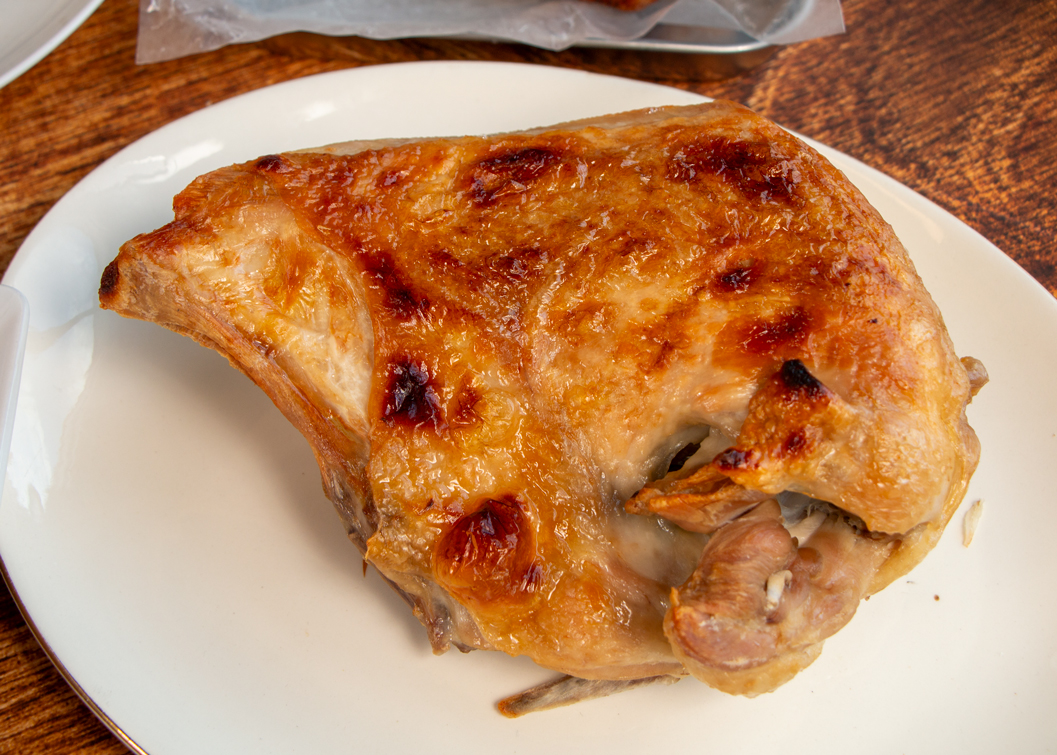
Roasted Turkey Breast
A multi-cooker or instant pot offers a speedy and efficient way to cook turkey, especially smaller cuts or a breast. This method is great for keeping the meat moist and tender, and it’s ideal for those who need to save time and kitchen space. The pressure-cooking technique also allows for deep flavor infusion, making your turkey dish flavorful and succulent.
Parts Suitable:
Turkey breasts, thighs, or smaller whole turkeys.
Cooking Temperature:
High pressure setting
Cooking Time:
Varies based on the size of the cut, usually around 30-40 minutes.
Overview:
Season the turkey, add it to the multi-cooker with a cup of broth or water, and cook under high pressure.
Tips:
- Use the poultry setting or high pressure for cooking turkey.
- Use the natural release method for better texture and moisture retention.
- Similar to the slow cooker method, you can transfer the fully cooked turkey to a roasting pan and broil in the oven for a few minutes to crisp up the skin.
Recipe: Instant Pot Turkey Breast
This recipe from Creme de la Crumb teaches you how to prepare a quick and easy bone-in turkey breast using an instant pot and broiler (for crispy skin).
https://www.lecremedelacrumb.com/best-ever-turkey-breast-recipe-instant-pot
Boiling
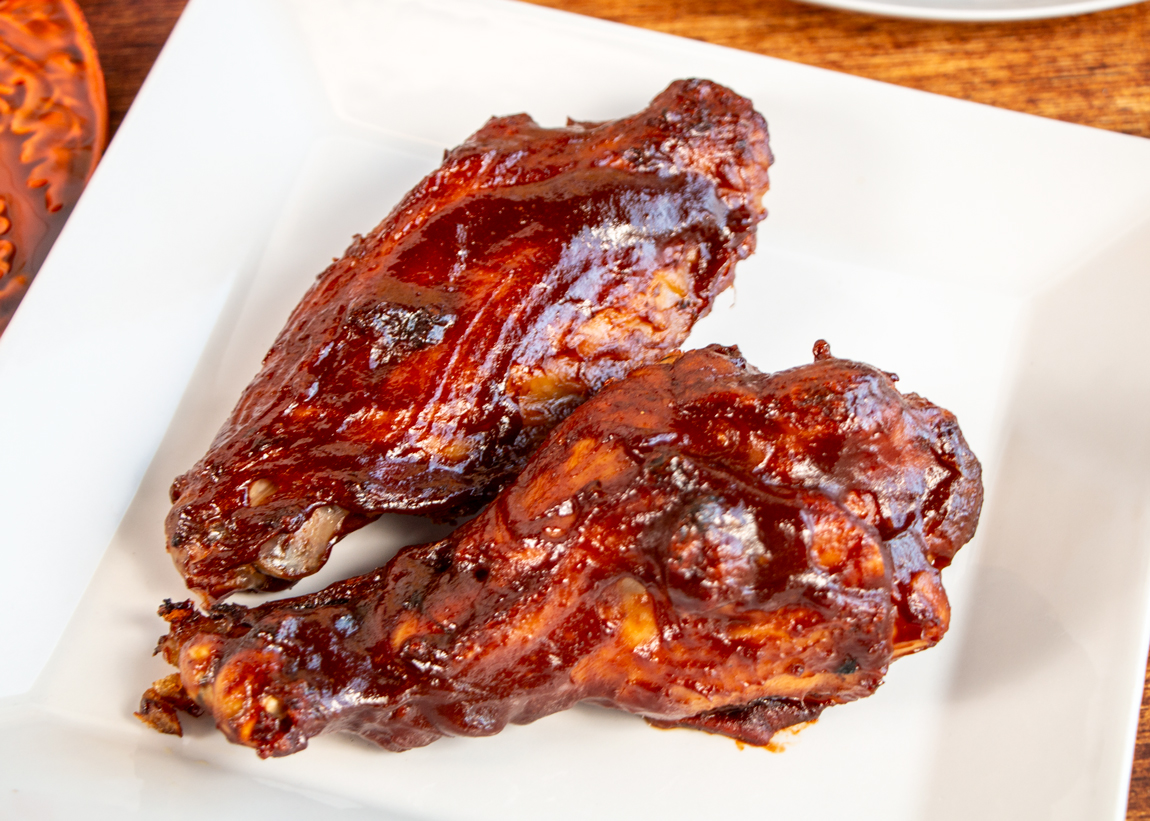
Boiled and Baked Turkey Wings
Boiling is a less common method for preparing turkey, but may be used in preparations such as soups or stews, or as the first step in preparing turkey wings. It’s a simple technique that ensures the meat stays tender and moist. Boiling is also a great way to make a rich, flavorful broth that can be used in various other Thanksgiving dishes, including homemade gravy.
—
As a First Step for Turkey Wings:
Boiling, or more specifically parboiling, is an excellent first step in cooking turkey wings. This method partially cooks the wings, ensuring that they are tender and have reduced cooking time when finished with another method like grilling, baking, or frying. It’s a great way to infuse basic flavors and ensure even cooking, especially for thicker cuts like turkey wings.
Parts Suitable:
Turkey wings, ideally for subsequent grilling, baking, or frying.
Cooking Time:
20-30 minutes for parboiling.
Overview:
Submerge the turkey wings in a pot of seasoned water or broth. Bring to a boil, then simmer for 20-30 minutes before finishing with another cooking method.
Tips:
- Add aromatics like onion, garlic, bay leaves, or celery to the boiling water for added flavor. After boiling, pat the wings dry before applying any rubs or sauces for grilling, baking, or frying.
- This approach is particularly useful for ensuring that the turkey wings are fully cooked and tender inside, while the final cooking method can provide flavor and texture, such as a crispy skin from grilling or frying.
Recipe: Grilled Turkey Wings
Try this recipe from The New York Times to learn how to prepare turkey wings using a boiling then grilling method.
https://cooking.nytimes.com/recipes/3722-grilled-turkey-wings
—
To Make Broth or Gravy:
Boiling turkey giblets is a classic approach to creating a hearty and flavorful broth, which serves as an excellent base for gravy. This method slowly simmers the giblets (which include the liver, heart, gizzards, and neck), extracting their deep flavors and nutrients. It’s a traditional way to utilize these parts of the turkey, ensuring a full-flavored and robust gravy for your Thanksgiving feast.
Parts Suitable:
Turkey giblets (liver, heart, gizzards, and neck).
Cooking Time:
1-2 hours, or until the broth is richly flavored.
Overview:
Place the giblets (except for the liver, which should be added later to avoid bitterness) in a pot and cover them with water. Add aromatics like onions, carrots, celery, and herbs. Bring to a boil, then reduce to a simmer, skimming any foam or impurities that rise to the surface.
Tips:
- For a clearer broth, simmer gently and avoid stirring too much. Strain the broth through a fine-mesh sieve for a smooth texture. The cooked giblets can be finely chopped and added back into the gravy for added texture and flavor.
- Remember to add the liver in the last 30 minutes of simmering to prevent it from becoming too bitter.
- This method not only utilizes the giblets but also helps in reducing waste by making use of parts that might otherwise be discarded. The resulting broth or gravy will have a depth of flavor that greatly enhances the overall meal.
Recipe: Homemade Gravy
Watch the above video or follow the step by step recipe at the link below to learn how to use your Thanksgiving turkey stock to make homemade gravy.
https://potatorolls.com/recipes/roasted-turkey-with-filling-and-gravy/
Braising
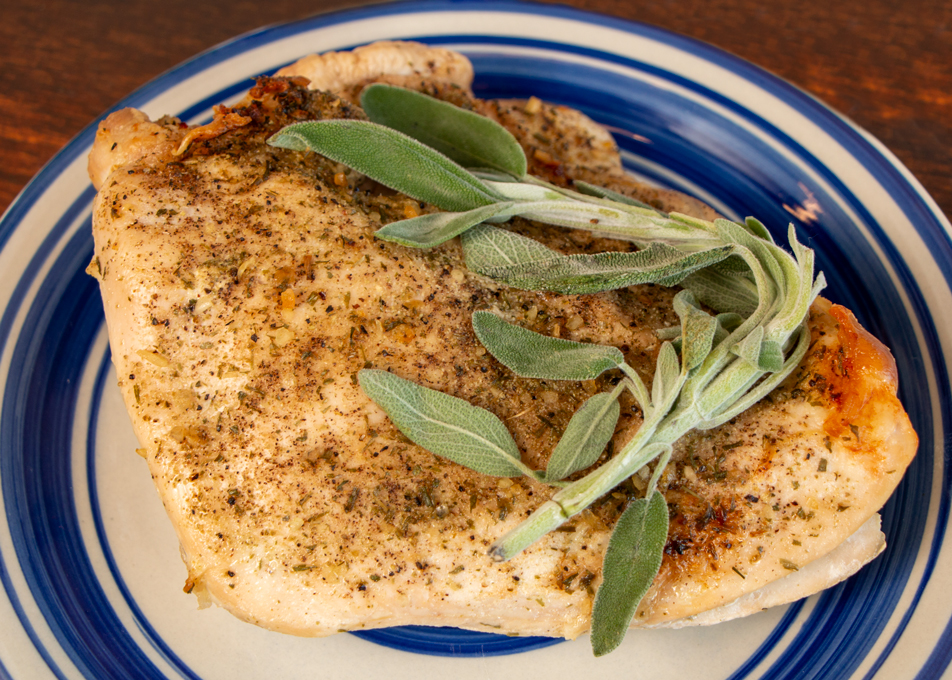
Braised Turkey Breast
Braising involves slowly cooking the turkey in a small amount of liquid, typically in a covered pot. This method is excellent for tougher cuts, as the slow cooking process tenderizes the meat while infusing it with the flavors of the liquid and aromatics used. Braised turkey is known for its tenderness and depth of flavor, offering a comforting and hearty addition to the Thanksgiving table.
Parts Suitable:
Turkey thighs, drumsticks, wings, or other parts as desired.
Cooking Temperature:
Typically around 325°F (163°C).
Cooking Time:
2-4 hours, depending on the cut.
Overview:
Brown the turkey parts in a pot, then add a small amount of liquid and aromatics. Cover and simmer until the meat is tender. Alternately, you can transfer the meat to a roasting pan, cover one-third to halfway with liquid and roast until cooked through.
Tips:
- Use a combination of broth, wine, or herbs for a rich and flavorful braising liquid.
Recipe: Basic Braised Turkey
This recipe from the New York Times shows how to prepare simple and flavorful braised turkey thighs and breasts in the oven alongside savory herbs and vegetables.
https://cooking.nytimes.com/recipes/12950-basic-braised-turkey
Griddling
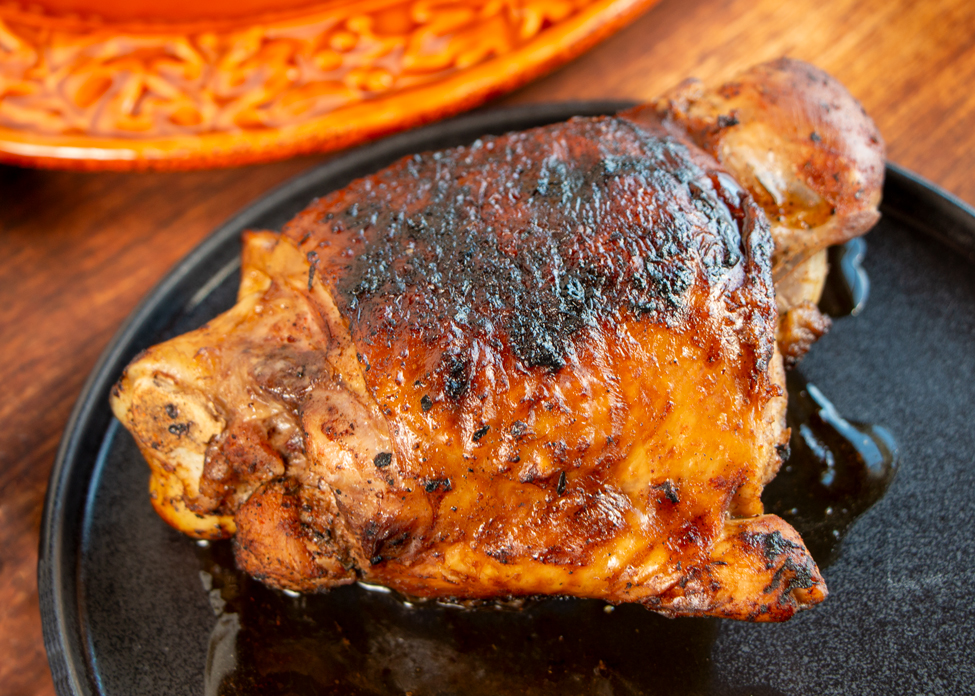
Griddled Turkey Thigh
Cooking turkey on a griddle is an excellent method for achieving a crispy, golden-brown exterior on thinner cuts or ground turkey patties. It’s a quick and interactive way to cook, perfect for a more casual Thanksgiving gathering. The griddle also allows for easy flavor customization with different marinades and seasonings.
Parts Suitable:
Turkey burgers, cutlets, thinly sliced breast meat, or other parts as desired.
Cooking Temperature:
Medium to medium-high heat.
Cooking Time:
Usually 5-10 minutes per side.
Overview:
Preheat the griddle, season the turkey cuts, and cook until they are well-browned and cooked through.
Tips:
- The griddle should be hot enough to sear the turkey but not so hot as to burn it.
- Use a cast-iron griddle for even heat distribution and a better sear on the turkey.
Recipe: Turkey Burger with Stuffing and Cranberry Sauce
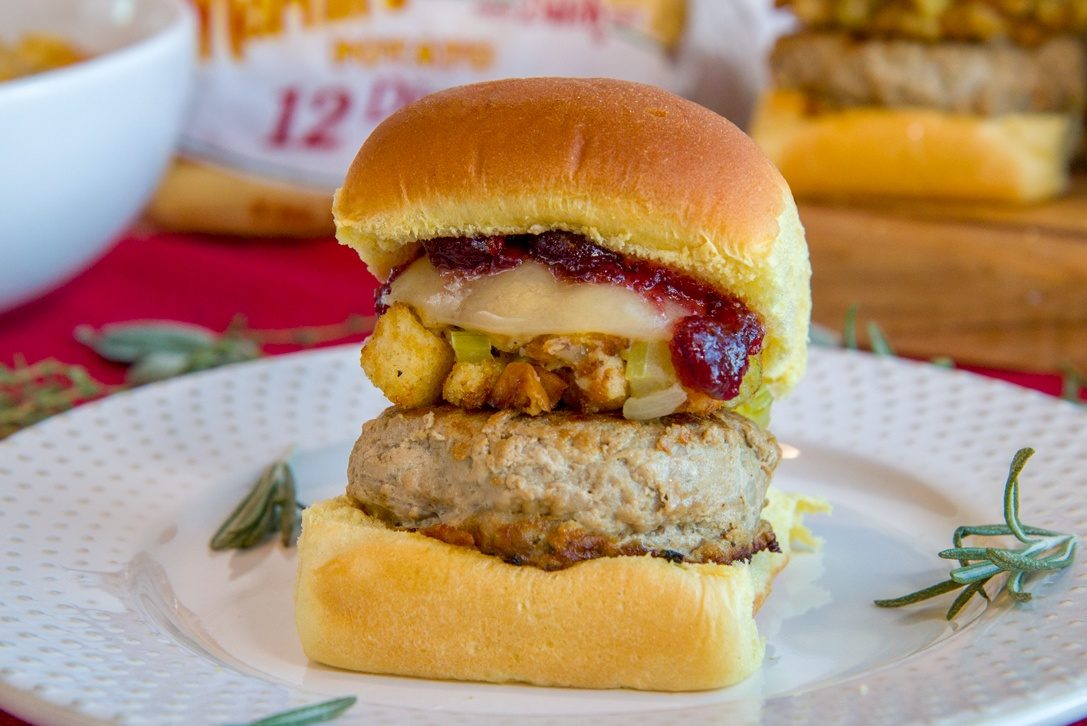
Utilize your Thanksgiving leftovers to prepare this delicious turkey burger, using a griddle or flat iron skillet to get a nice, crispy sear.
https://potatorolls.com/recipes/turkey-burger-with-stuffing-and-cranberry-sauce/
Baking
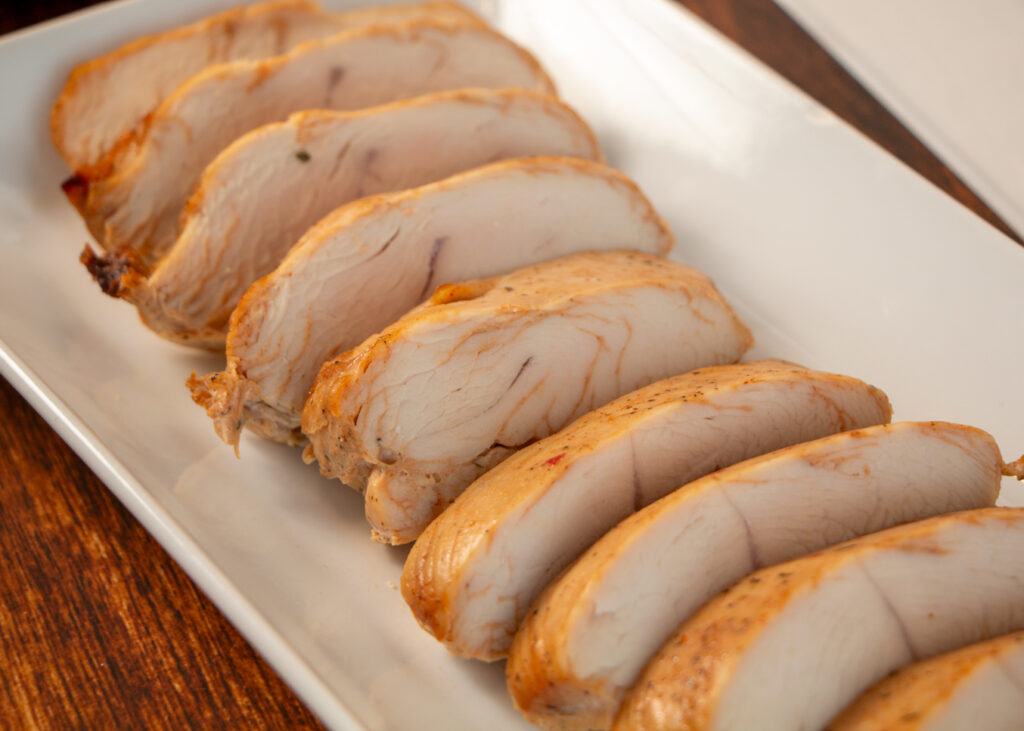
Baked Turkey Tenderloin
Baking is similar to oven-roasting but typically involves lower temperatures and often includes a covering, such as foil, to retain moisture. This method is ideal for turkey meatloaf, casseroles, or stuffed turkey breasts. Baking allows for a variety of creative preparations, making it a versatile option for your Thanksgiving feast.
Parts Suitable:
Turkey breasts, ground turkey, turkey meatloaf.
Cooking Temperature:
Generally around 350°F (175°C).
Cooking Time:
Varies depending on the dish, usually around 30 minutes to 1 hour.
Overview:
Prepare the turkey dish as per the recipe, place it in a preheated oven, and bake until cooked through.
Tips:
- Adjust instructions based on specific recipe requirements.
- Cover the dish with foil to prevent the top from burning and to keep the turkey moist.
- After baking, let turkey breast rest for about 10-15 minutes before slicing. This allows the juices to redistribute throughout the meat, ensuring that it’s moist and flavorful.
Recipe: Rolled Stuffed Turkey Breast
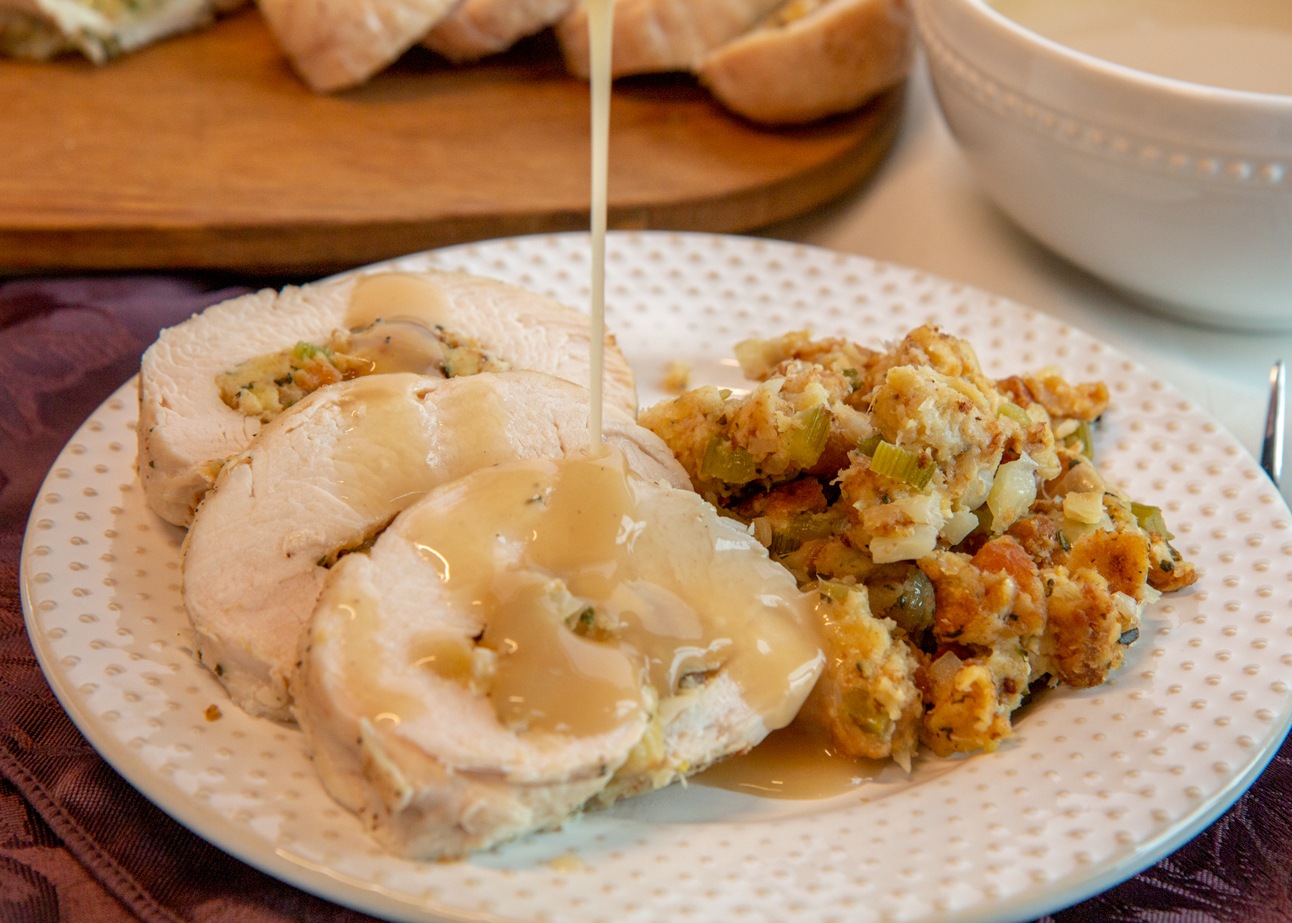
This recipe uses two boneless turkey breast tenderloins, butterflied and pounded to ½” thick, stuffed with freshly made vegetable and herb stuffing, and rolled into a roulade for an innovative twist on a Thanksgiving classic.
https://potatorolls.com/recipes/rolled-stuffed-turkey-breast
Turkey Seasoning Guide
If you are looking for more customization for your Thanksgiving meal, consider experimenting with different seasoning options. Seasoning a Thanksgiving turkey is your opportunity to infuse it with a variety of flavors, ranging from traditional to more unique and modern twists.
Here are some popular seasoning options:
- Classic Herbs and Spices: A traditional blend often includes thyme, rosemary, sage, and parsley. Garlic powder, onion powder, and paprika are also commonly used for added depth of flavor. Salt and black pepper are essential for bringing out the natural flavors of the turkey.
- Citrus and Aromatics: Stuffing the turkey cavity with lemon, orange, or apple slices, along with onions and garlic, can impart a subtle, refreshing flavor. These ingredients also help to keep the turkey moist during cooking.
- Butter Rubs: Softened butter, often mixed with herbs and garlic, can be rubbed under and on the skin of the turkey. This not only flavors the meat but also helps achieve a golden, crispy skin.
- Brining: A saltwater brine, sometimes infused with herbs, citrus, and spices like bay leaves, juniper berries, or cloves, can be used to marinate the turkey before cooking. This process enhances juiciness and flavor.
- BBQ and Smoky Flavors: For those who enjoy a smoky flavor, a rub or marinade featuring smoked paprika, cumin, and a touch of brown sugar can add a BBQ twist to the turkey.
- Spicy Variations: Adding a bit of heat with cayenne pepper, chili powder, or even a splash of hot sauce in the marinade or rub can appeal to those who like spicier food.
- Maple and Mustard Glaze: A sweet and tangy glaze made from maple syrup and Dijon mustard can be brushed on the turkey during the last hour of roasting for a unique flavor profile.
- Cultural Twists: Incorporating spices and herbs specific to various cuisines, such as a mix of garam masala for an Indian-inspired turkey, or using a jerk spice blend for a Caribbean flavor, can be a delightful way to add an international twist to your meal.
- Umami Flavors: Ingredients like soy sauce, Worcestershire sauce, or mushroom powder can be added to the seasoning mix to enhance the umami flavor of the turkey.
- Fresh Herbs: For a more subtle and fresh flavor, a bouquet of fresh herbs like thyme, rosemary, and sage, either placed in the cavity or used as a rub, can impart a delightful aroma and taste.
Additional Turkey Variations:
While we’ve already covered a range of cooking methods, the world of turkey preparation is vast and full of exciting variations. For those looking to try something different this Thanksgiving, consider these options:
- Spatchcock: This method involves butterflying and flattening the turkey for uniform cooking and a crispier skin.
- Stuffed Turkey: A timeless classic where the turkey is filled with stuffing, infusing the meat with a delightful blend of flavors.
- Sous Vide: Known for its precision, this technique ensures the turkey is cooked uniformly, resulting in exceptionally moist meat.
- Turducken: For the adventurous cook, this is a multi-layered dish where a chicken is stuffed into a duck, which is then stuffed into a turkey, creating a show-stopping feast.
Each method offers a unique twist on the traditional turkey, bringing elements of surprise and delight to your holiday meal.
This Thanksgiving, venture beyond the traditional oven-roasted turkey and explore the multitude of flavors and characteristics that these cooking methods offer. Whether you’re a fan of the classic roast or in the mood to experiment with something like air-frying or braising, each method brings its unique twist to your holiday table. Remember, the key to a perfect turkey is not just the cooking technique but the love and care you put into preparing it. Happy Thanksgiving, and happy cooking!
Related posts:
Our latest content, delivered straight to your inbox.
Be the first to hear about our newest recipes, tips, and company updates!

